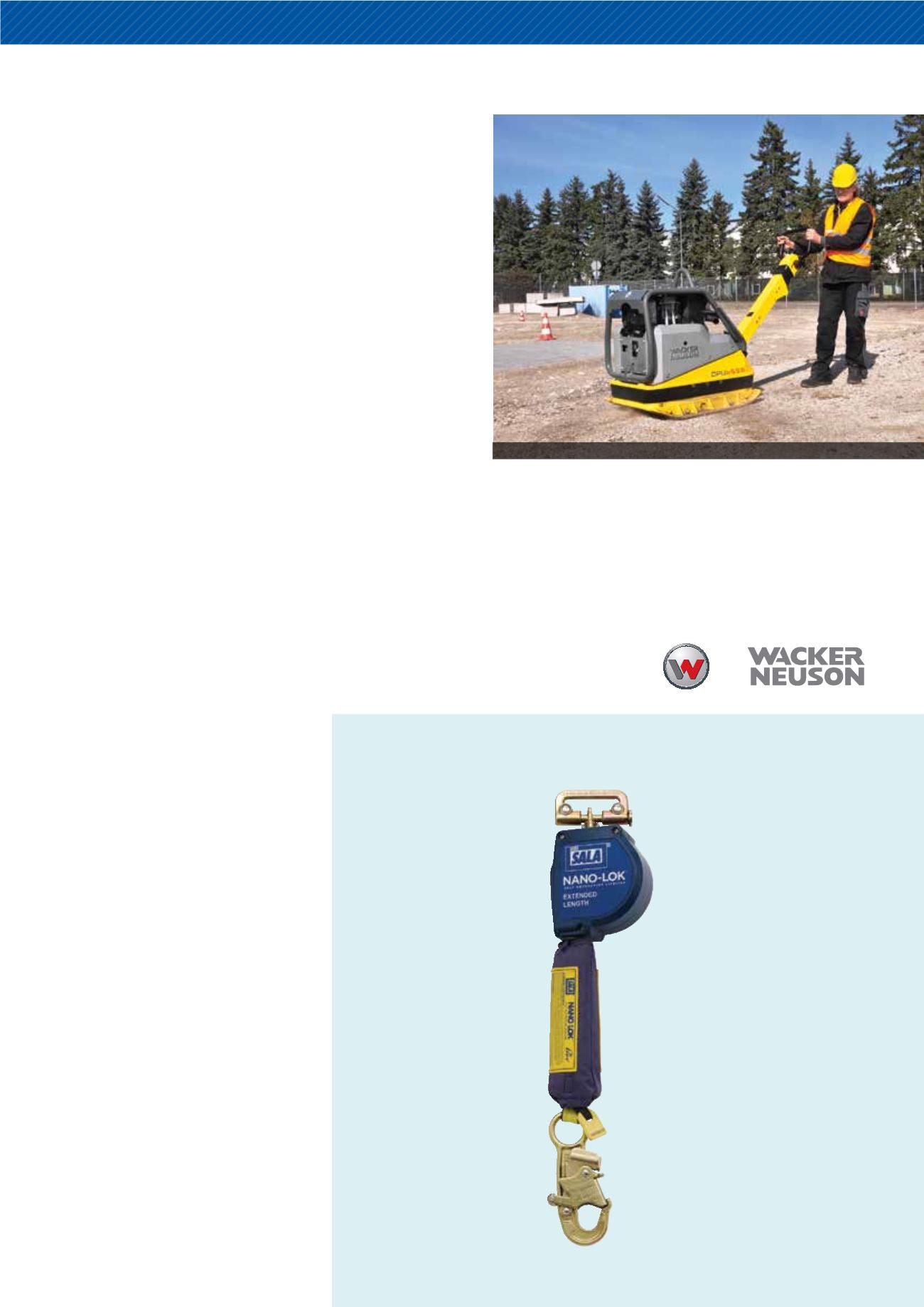

SAFE at WORK
56
HIRE AND RENTAL NEWS • AUGUST 2015
Hand–arm vibration (HAV) is vibration
transmitted to the hand and arm during
the operation of hand-held power tools
and hand-guided equipment, or holding
materials being processed by machines.
Hand–arm vibration is commonly
experienced by workers who regularly
use tools such as compaction equipment,
concrete vibrators, jackhammers,
chainsaws, garden care equipment,
grinders, drills etc. Painful and permanent
injury to hands and arms may result from
high levels of exposure to vibrations when
operating such equipment. HAV can cause
a range of conditions collectively known as
hand–arm vibration syndrome (HAVS) and
specific disorders such as carpal tunnel
syndrome, ‘tennis elbow’ and ‘vibration
white finger’.
HAV is quickly becoming a WHS issue
in the Australian construction market
and contractors need to take measures
to reduce the HAV exposure of their
employees. Presently there are no
mandatory exposure levels in Australia,
although in Europe there are mandatory
levels which may be used as a guide.
However employers need to ensure they
are making appropriate risk assessments
to limit employees' exposure to HAV.
HAV is measured where the operator holds
onto the machine and a measurement
is recorded. An example of recorded
measurement would read like
HAV 5.4m/s
2
. (5.4m per second squared).
Some equipment manufacturers print
these measurements in their operator’s
manual or even label their equipment
with HAV values to help guide their
customers. If not they should have
the figures available upon request. A
contractor should select tools that can be
used with the daily vibration exposure
of the operator remaining below 2.5m/s
2
averaged over an eight hour working day.
If this is not achievable, consider changing
or rearranging the task so this can be met.
Sometimes it is not possible to reduce
exposure to below 2.5m/s
2
however you
should never allow a worker to be exposed
to more than 5m/s
2
over an eight hour day.
How to reduce HAV exposure
Make an informed decision when
purchasing equipment. Do some research
and choose equipment that is designed to
help reduce lower HAV exposure.
TECH
TALK
Hand Arm Vibration (HAV)
Assess the risk and
manage the time
workers are using
equipment. Alternate
workers that are exposed
to higher HAV levels
when using equipment.
Train workers to
understand and
recognise their own
exposure levels, fatigue
and operating posture.
How manufacturers
are helping reduce
exposure to HAV while using their
equipment
• The introduction of remote controlled
equipment has greatly reduced
operators' HAV exposure. Other benefits
include reduction in noise, exposure
to fumes, exposure to vibration when
using compaction equipment and
minimise exposure to trench collapse.
• Designing equipment for reduced HAV
levels, dampening operators handles
etc.
• Ergonomically designing equipment to
help reduce fatigue, for improved hand
and arm positioning.
• Labelling equipment to guide operators
as well as employers on the level of
HAV exposure.
Contact: 03 9549 0000 or visit website:
www.au.wackerneuson.comCapital Safety has launched
its new DBI-SALA Nano-Lok
Extended Length range of Self-
Retracting Lifelines (SRL’s).
Nano-Lok Extended Length
compact SRL’s provide extended
lifeline length when working at
height. The additional length
increases the anchorage options
and provides added mobility and
versatility where fall protection
is required.
“Depending on the model
selected, they provide up to 1.6m
more lifeline to the user, in a
compact, lightweight, easy-to-
use unit,” Rick Millar, Technical
Manager for Capital Safety
Australia & New Zealand said.
Belonging to the Nano-Lok
family, these new SRL’s have the
same feature set making them
compact and lightweight. They
can be used in place of lanyards
and directly attached to any
Extended length SRLs for added fall
protection versatility
harness, reducing fall clearances.
Designed for ease-of-use, these
SRL’s are unobtrusive to the
user when worn and provide the
ultimate in work site flexibility.
The new Nano-Lok Extended
Length range consists of two
single leg webbing lifeline models
with either a snap or scaffold hook
designed to cover the majority of
applications. DBI-SALA’s i-Safe
intelligent safety system utilising
RFID technology is built into each
Nano-Lok Extended Length SRL to
track inspections, control inventory
and manage information.
Capital Safety, a fall protection
company and a leading designer
and manufacturer of height safety,
confined space and industrial
rescue equipment with 20 operating
sites worldwide, is home of the DBI-
SALA and Protecta brands.
Contact: 1800 245 002 or visit:
www.capitalsafety.com.auHAV is quickly becoming a WHS issue in the Australian construction market










